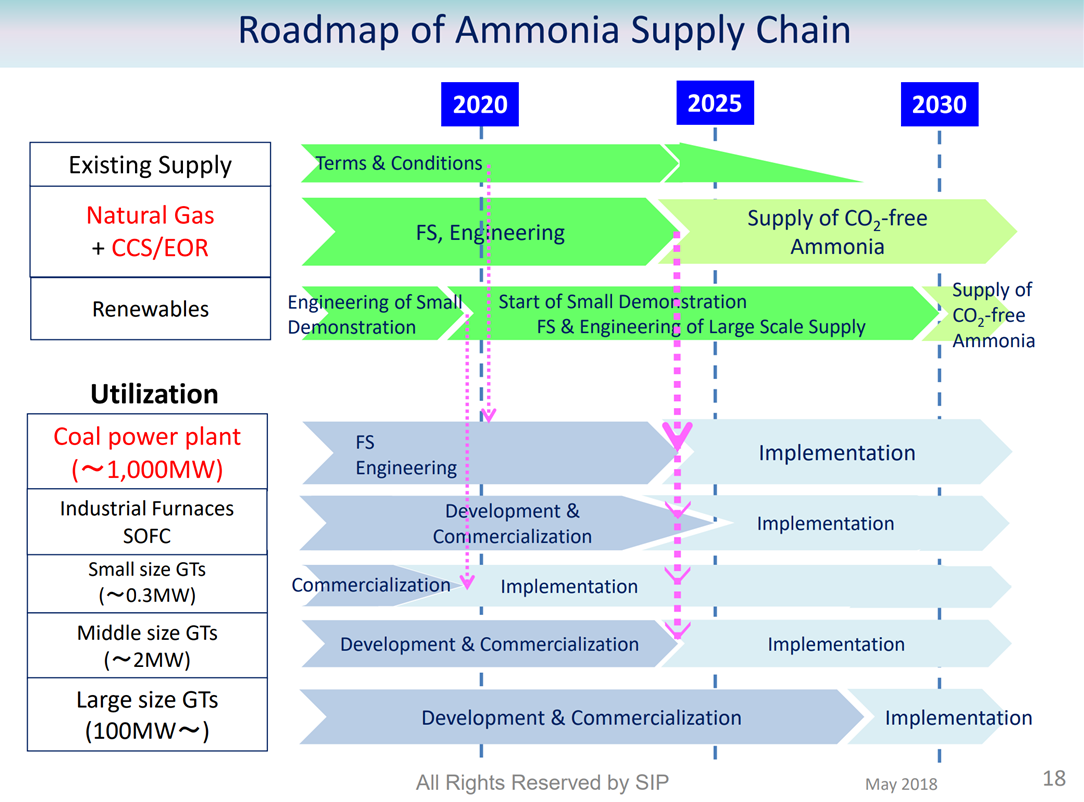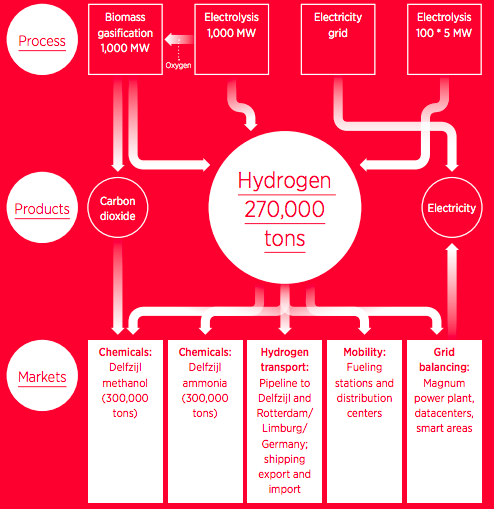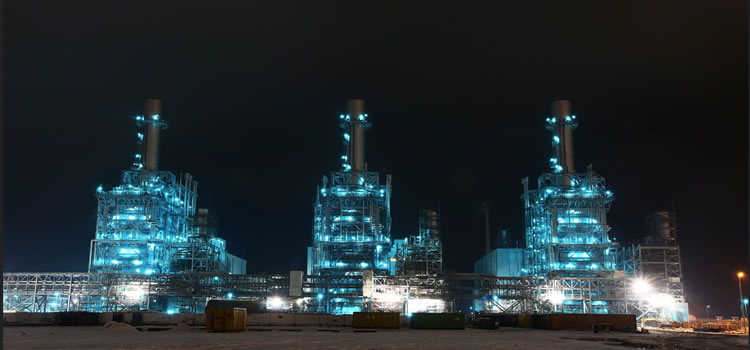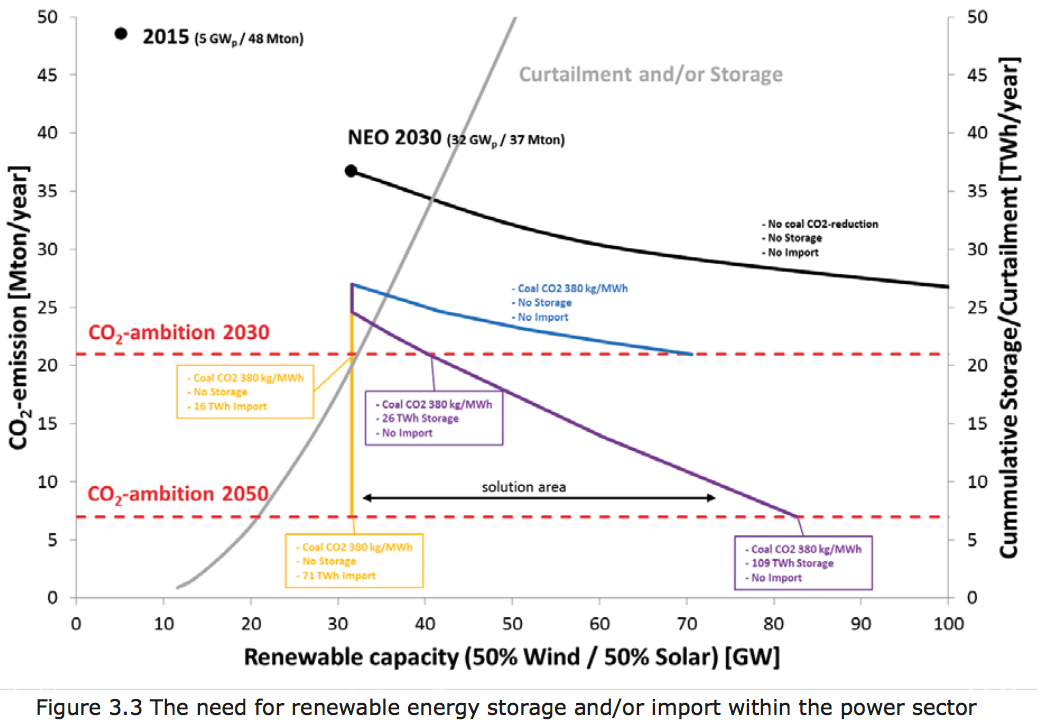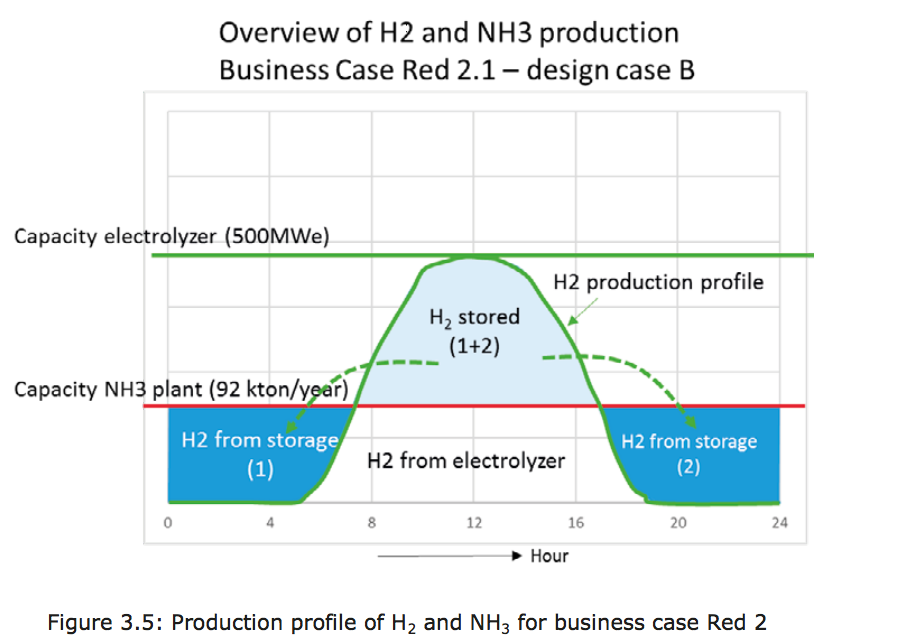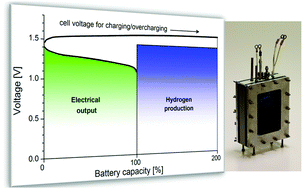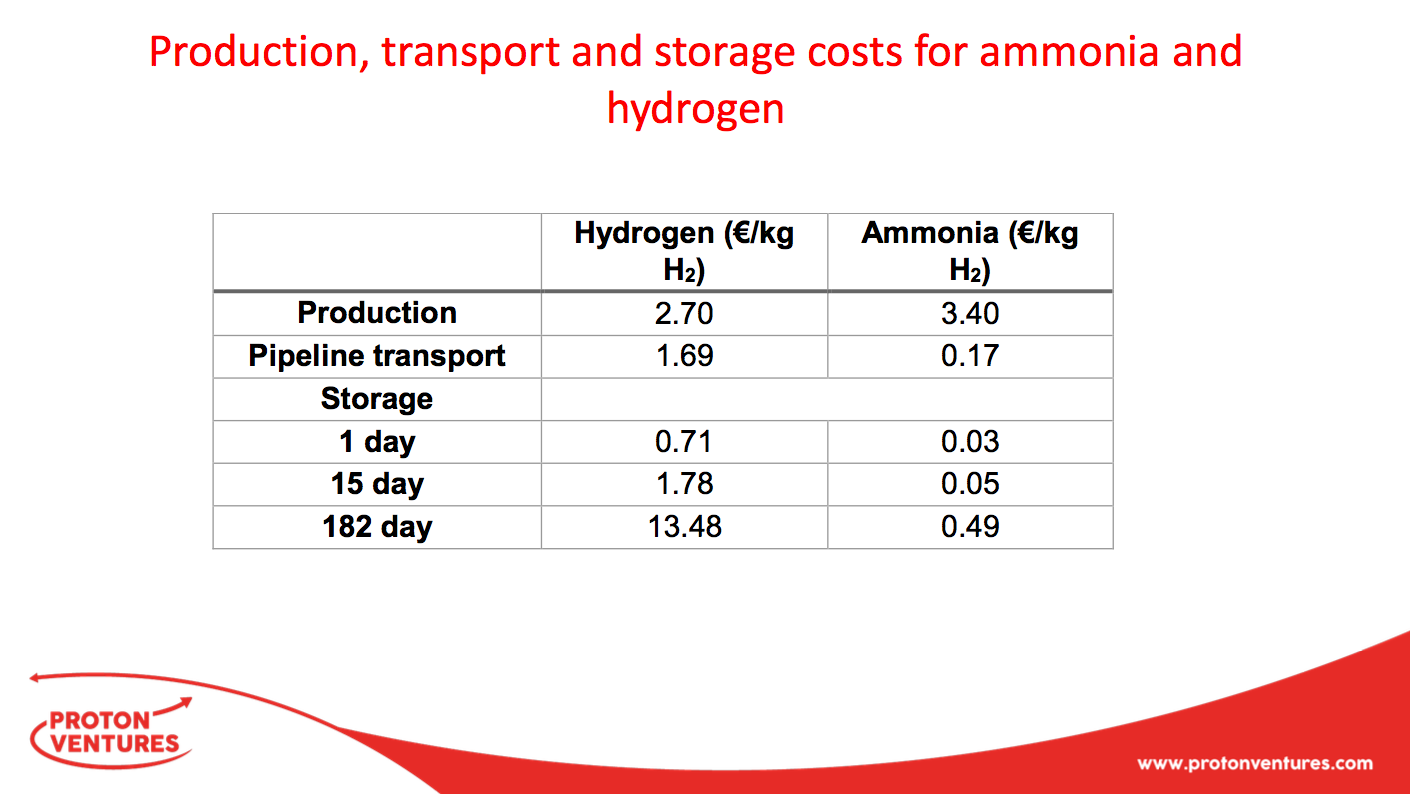ETN Global’s latest R&D Recommendation was released in October 2018. ETN stands for European Turbine Network and its technology of interest is the gas turbine. The 2018 Recommendation is notable because it is the first that includes ammonia on the R&D agenda.
Content Related to Nuon
Article
Battolyser Attracts Grant Funding, Corporate Support
Stephen H. Crolius June 21, 2018
The kernel of the story is this: Battolyser B.V. is taking a step forward with the battolyser, its eponymous energy storage technology. On June 12, Battolyser’s joint venture partners Delft University of Technology (TU Delft) and Proton Ventures announced that they had secured a €480,000 grant from Waddenfonds, a Dutch public-sector funding agency, to build a 15 kW/60 kWh version of the battolyser. The installation will take place at Nuon’s Magnum generating station at Eemshaven in the Netherlands. The move makes tangible the vision of the battolyser as an integral part of an energy supply system with a robust quota of renewably generated electricity. The battolyser is a battery that stores electricity in the conventional galvanic manner until it is fully charged. At that point, the device uses any additional electricity supplied for the electrolysis of water and evolution of hydrogen. If the device is integrated with hydrogen buffer storage and an ammonia production train, the result will be a versatile and highly scalable energy storage system that can provide highly responsive grid support on all time scales from seconds to months. (Ammonia Energy last posted on the battolyser on March 1, 2018.)
Article
A Roadmap for The Green Hydrogen Economy in the Northern Netherlands
Trevor Brown June 15, 2018
A number of green ammonia projects have been announced in the Netherlands since the influential Power-to-Ammonia feasibility study was published in early 2017. Perhaps the most important publication since then, however, is the roadmap published by The Northern Netherlands Innovation Board, The Green Hydrogen Economy in the Northern Netherlands. Its scope, including sections written by consultants from ING, Rabobank, and Accenture, goes well beyond the standard techno-economic analysis and presents a cogent plan for coordinated development of "production projects, markets, infrastructure and societal issues." Green ammonia features heavily throughout the roadmap, which calls for the construction of 300,000 tons per year of renewable ammonia production in Delfzijl by 2024, as well as for large-scale imports of green ammonia, starting in 2021, which would provide low-cost delivery and storage of carbon-free fuel, cracked into hydrogen, for the Magnum power plant.
Article
Ammonia-to-Hydrogen Seen for Electricity Generation
Stephen H. Crolius April 26, 2018
Approximately 40% of the world’s energy budget is consumed in the generation of electricity. This is by far the largest use of primary energy across major energy-consuming sectors (transportation, industry, etc.). What role ammonia will play in the electricity sector is therefore a question of considerable importance for the sustainable energy system of the future. One concept currently on the table is power-to-ammonia as a means of electricity storage, whereby electricity is used to produce hydrogen and the hydrogen is reacted with nitrogen to produce ammonia. The other, mirror-image, concept is to use ammonia, or hydrogen derived from ammonia, as a fuel that can be turned into electricity. This “back-end” use case is the focus of recent announcements from Mitsubishi Hitachi Power Systems (MHPS). According to an April 5 story in the Nikkei Sangyo, MHPS plans to put a “hydrogen-dedicated gas turbine . . . into practical use by 2030.” The company also stated that it has “started developing technology to extract hydrogen from ammonia,” citing ammonia’s ease “to store and transport.”
Article
Power-to-Ammonia: the Economic Viability of Ammonia Energy
Trevor Brown October 05, 2017
In the last 12 months ... The extensive Power-to-Ammonia feasibility study demonstrated that ammonia energy could be economically viable in different business cases. The report was a collaborative effort by large European corporations - power companies, electricity distributors, chemical producers, engineering firms - and it has already resulted in plans for one 440 MW power plant to be converted to carbon-free fuel by 2023.
Article
Ammonia for grid-scale power: Nuon, Gasunie, and Statoil
Trevor Brown July 12, 2017
A new collaboration was announced last week, between Dutch power company Nuon, European natural gas pipeline operator Gasunie, and Norwegian oil major Statoil. The joint venture will look at converting one of the Magnum power plant's three 440 MW gasifiers, with hopes to have it running on hydrogen fuel by 2023. This is the continuation of the Power to Ammonia project and, although ammonia is not expected to be used in this particular stage of the project, converting Magnum to hydrogen fuel represents the "intermediate step" to demonstrate that "where hydrogen could be produced using natural gas by 2023, from the year 2030 it could be possible to produce it with sustainably produced ammonia ... Ammonia then effectively serves as a storage medium for hydrogen, making Magnum a super battery."
Article
Power to Ammonia: the Eemshaven case
Trevor Brown April 28, 2017
The Institute for Sustainable Process Technology recently published a feasibility study, Power to Ammonia, looking at the possibility of producing and using ammonia in the renewable power sector. This project is based in The Netherlands and is led by a powerful industrial consortium. I wrote about the feasibility study last month, but it deserves closer attention because it examines three entirely separate business cases for integrating ammonia into a renewable energy economy, centered on three site-specific participants in the study: Nuon at Eemshaven, Stedin at Goeree-Overflakkee, and OCI Nitrogen at Geleen. Over the next few years, the group intends to build pilot projects to develop and demonstrate the necessary technologies. Next month, however, these projects will be an important part of the Power-to-Ammonia Conference, in Rotterdam on May 18-19. This article is the first in a series of three that aims to introduce each business case.
Article
Power to Ammonia feasibility study
Trevor Brown March 31, 2017
The Institute for Sustainable Process Technology has just published a feasibility study that represents a major step toward commercializing renewable ammonia. It examines the "value chains and business cases to produce CO2-free ammonia," analysing the potential for commercial deployment at three companies with existing sites in The Netherlands: Nuon at Eemshaven, Stedin at Goeree-Overflakkee, and OCI Nitrogen at Geleen. The project is called Power to Ammonia.
Article
Ammonia Energy Conference Announced for Europe
Stephen H. Crolius March 03, 2017
Proton Ventures announced today that the “1st European Conference on Sustainable Ammonia Solutions” will take place on the 18th and 19th of May. The conference will be held at the RDM Congrescentrum in Rotterdam in the Netherlands.
Article
TU Delft’s Battery-Electrolyzer Technology
Stephen H. Crolius January 13, 2017
On December 14, the journal Energy & Environmental Science published an article on a new technology, “Efficient electricity storage with a battolyser, an integrated Ni–Fe battery and electrolyser.” The lead author is Fokko Mulder, Professor of Materials for Energy Conversion & Storage at the Delft University of Technology (TU Delft) in the Netherlands. The system developed by Mulder and his collaborators accepts electricity from an external source and stores it in the conventional manner of all batteries. The twist is that when the battery is fully charged, any additional incoming electricity is used to generate hydrogen and oxygen via electrolysis. The technology may prove to be a valuable element in a grid-scale ammonia-based energy system.
Article
Nuon's Power-to-Ammonia update, and the first European ammonia fuel conference in 2017
Trevor Brown December 02, 2016
An article in the latest issue of Dutch-language magazine NPT Proces Technologie provides a detailed update on the Nuon project, about which we wrote a few months ago. Nuon's Power-to-Ammonia project looks at grid-scale storage of "seasonal surplus" electricity from wind and solar in the form of ammonia. Proton Ventures, the originators of the Power-to-Ammonia concept in The Netherlands, have also been sharing details of the project in recent conference presentations - and announced that they will be hosting the first European ammonia fuel conference, in Rotterdam, in May 2017.
Article
Nuon - Power to Ammonia
Stephen H. Crolius September 19, 2016
In March 2016 the Dutch utility Nuon announced that it will study the possibility of storing "seasonal surplus" electricity from wind and solar in the form of ammonia. The study by Nuon and Delft University of Technology (TU Delft) is part of the project "Power to Ammonia." The study will be conducted at Nuon's Magnum power station.
